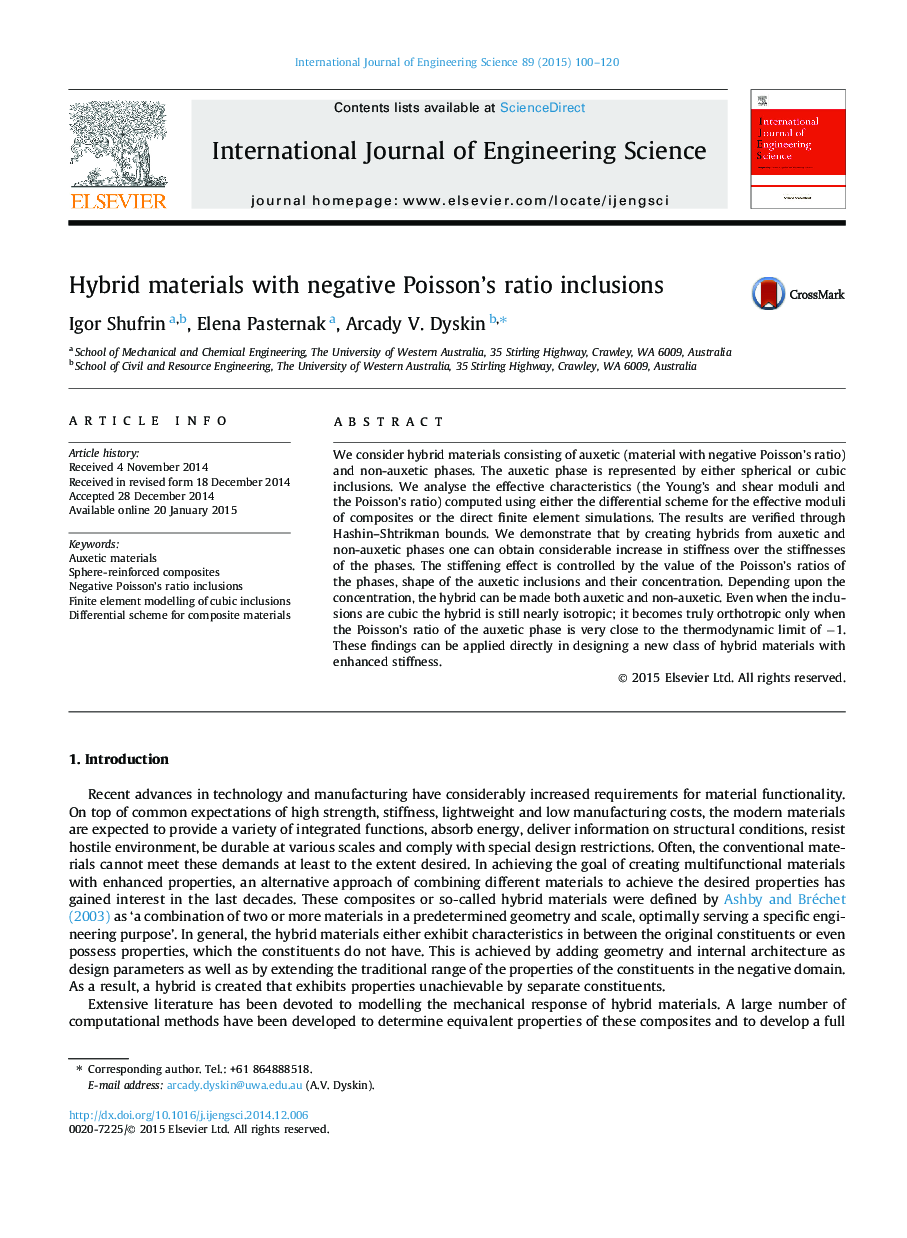| Article ID | Journal | Published Year | Pages | File Type |
|---|---|---|---|---|
| 824828 | International Journal of Engineering Science | 2015 | 21 Pages |
We consider hybrid materials consisting of auxetic (material with negative Poisson’s ratio) and non-auxetic phases. The auxetic phase is represented by either spherical or cubic inclusions. We analyse the effective characteristics (the Young’s and shear moduli and the Poisson’s ratio) computed using either the differential scheme for the effective moduli of composites or the direct finite element simulations. The results are verified through Hashin–Shtrikman bounds. We demonstrate that by creating hybrids from auxetic and non-auxetic phases one can obtain considerable increase in stiffness over the stiffnesses of the phases. The stiffening effect is controlled by the value of the Poisson’s ratios of the phases, shape of the auxetic inclusions and their concentration. Depending upon the concentration, the hybrid can be made both auxetic and non-auxetic. Even when the inclusions are cubic the hybrid is still nearly isotropic; it becomes truly orthotropic only when the Poisson’s ratio of the auxetic phase is very close to the thermodynamic limit of −1. These findings can be applied directly in designing a new class of hybrid materials with enhanced stiffness.
